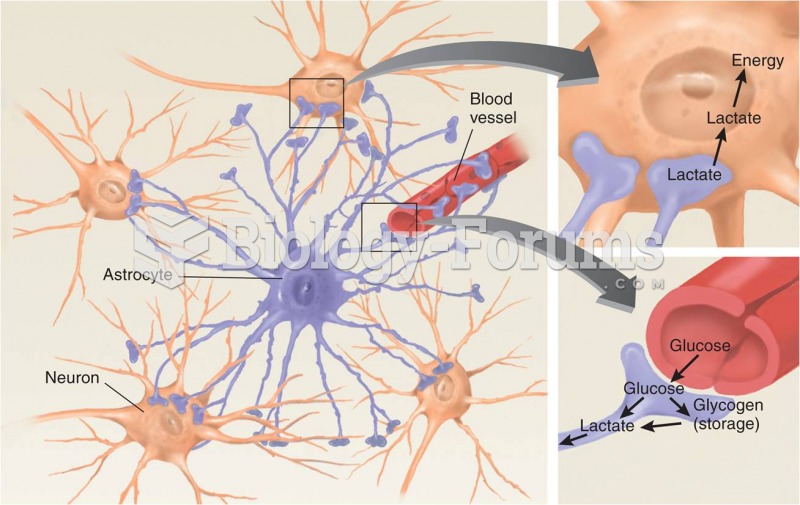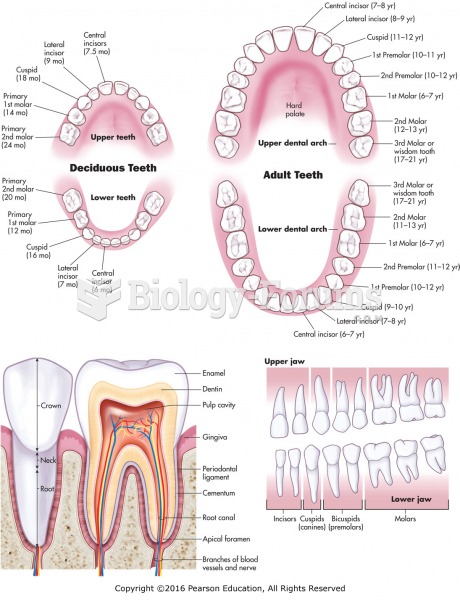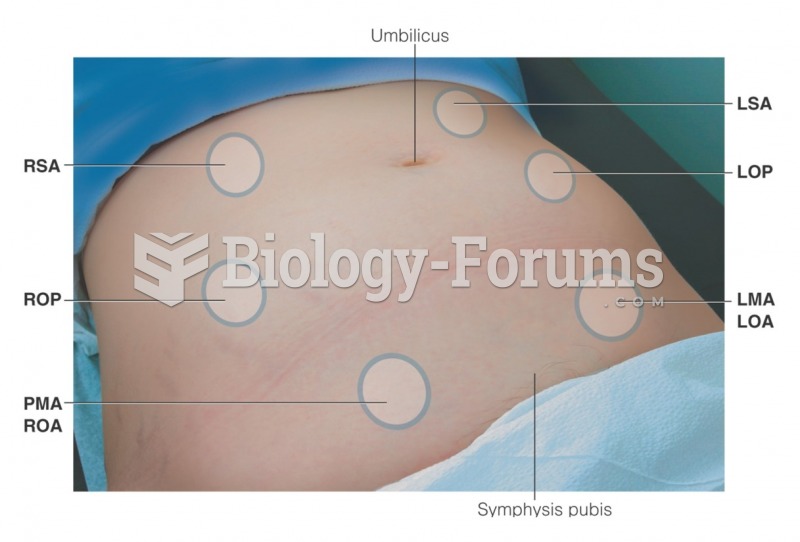|
|
|
Common abbreviations that cause medication errors include U (unit), mg (milligram), QD (every day), SC (subcutaneous), TIW (three times per week), D/C (discharge or discontinue), HS (at bedtime or "hours of sleep"), cc (cubic centimeters), and AU (each ear).
Egg cells are about the size of a grain of sand. They are formed inside of a female's ovaries before she is even born.
After a vasectomy, it takes about 12 ejaculations to clear out sperm that were already beyond the blocked area.
Medication errors are three times higher among children and infants than with adults.
Asthma-like symptoms were first recorded about 3,500 years ago in Egypt. The first manuscript specifically written about asthma was in the year 1190, describing a condition characterized by sudden breathlessness. The treatments listed in this manuscript include chicken soup, herbs, and sexual abstinence.







